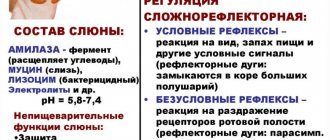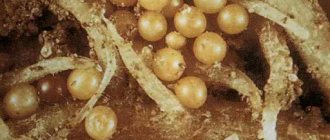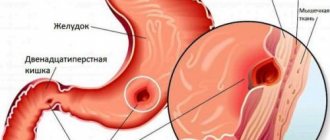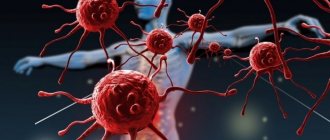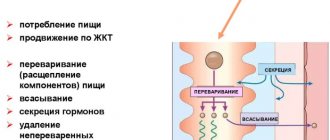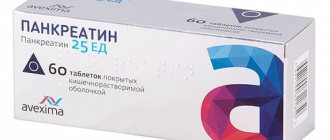We swallow saliva regularly. And we are accustomed to the fact that the oral cavity is always wet and we perceive the cessation of sufficient production of this biological fluid with suspicion. As a rule, increased dry mouth is a sign of some disease.
Saliva is a common and necessary biologically active liquid. Helps maintain the level of immune defense in the oral cavity and digestion of food. What is the composition of human saliva, fluid production rates, as well as physical and chemical properties?
A little biology
Saliva is a biological substance secreted by the salivary glands. Liquid is produced by 6 large glands - submandibular, parotid, sublingual - and many small ones located in the oral cavity. Up to 2.5 liters of fluid are released per day.
The composition of the secretions of the salivary glands differs from the composition of the fluid in the oral cavity. This is due to the presence of food debris and the presence of microorganisms.
Functions of biological fluid:
- wetting the food bolus;
- disinfectant;
- protective;
- promotes articulation and swallowing of food bolus;
- breakdown of carbohydrates in the oral cavity;
- transport - the liquid wets the epithelium of the oral cavity and participates in the exchange of substances between saliva and the oral mucosa.
Mechanism of saliva production
The role of saliva in the development of dental caries
Saliva represents
a biological fluid that is constantly present in the oral cavity, participating in digestion, performing mechanical cleaning, protecting the surface of the teeth and oral mucosa from bacterial and chemical influences.
All physiological processes of the hard tissues of the tooth after eruption occur in relationship with saliva - the biological environment of the oral cavity. The main functions of saliva in maintaining the balance of minerals in the enamel of teeth are as follows:
- The mineralizing function of saliva, due to which the mineralization of teeth is carried out, the enamel “maturation” after eruption, the optimal composition of the enamel is maintained, and its restoration occurs
- Protective function, which consists in protecting the oral cavity from the harmful effects of environmental factors
- The cleansing role of saliva, consisting of constant mechanical and chemical cleansing of the oral cavity from food debris, microflora, etc.
Composition of saliva
. Saliva consists of 99.4% water and 0.6% organic and inorganic substances. Of the inorganic components in saliva, there are calcium salts, phosphates, potassium and sodium compounds, chlorides, fluorides, bicarbonates, etc. Consequently, under physiological conditions, saliva is supersaturated solution based on calcium and phosphate content.
The state of saliva oversaturation is important for preserving and maintaining the constancy of dental tissues in the oral cavity, to ensure the balance of mineral components. The oversaturation of saliva with calcium and phosphate salts, on the one hand, prevents the dissolution of enamel, since saliva is already oversaturated with the components that make up the enamel; on the other hand, it promotes the diffusion of calcium and phosphate ions into the enamel, since their active concentration in saliva significantly exceeds that in the enamel, and the state of supersaturation promotes their adsorption onto the enamel.
The mineralizing role of saliva has been repeatedly proven experimentally and clinically, especially in studies with radioactive isotopes. It has been shown that the processes of “maturation” of enamel are ensured primarily due to the active intake of calcium ions, phosphorus and fluorine from saliva.
According to the research data of M.V. Galiulina, V.K. Leontyev (1990), saliva is a structured colloidal system, since it contains mucin and other surfactants.
Therefore, the task of local prevention is to maintain the mineralizing function of saliva
at an optimal level by saturating it with calcium, phosphate, and fluorine ions from preventive means. In this case, an important factor is maintaining the pH of saliva within the limits of physiological fluctuations, which is facilitated by rational oral hygiene and limiting the intake of carbohydrates.
The second most important function of saliva is protective.
It is determined by the mechanical, immunological and antibacterial properties of saliva. The constant secretion of saliva and its moistening of the mucous membrane help maintain the oral cavity in an active functional state, wash out microflora and food debris, and prevent drying out of the mucous membrane and the development of inflammatory processes. Saliva also plays an important role in the self-cleaning of the oral cavity due to the adequate volume of secretion, quantitative and qualitative composition.
Antibacterial factors in saliva are represented by lysozyme, lactoperoxidase and other protein substances. They have bactericidal and bacteriostatic properties against a number of pathogenic microorganisms, which ensures the protective function of saliva. A decrease in the protective function of saliva adversely affects the condition of the oral cavity and leads to the development of pathological processes in periodontal tissues and mucous membranes.
Physical properties and composition of saliva
Biological fluid in a healthy person has a number of physical and chemical properties. They are presented in the table.
Table 1. Normal characteristics of saliva.
| Index | Characteristic |
| Transparency | Transparent, minor inclusions of air, pieces of food. |
| Density | Slightly higher than the density of water, depending on the composition - from 1 to 1.12 g/ml. |
| Color | Normally – absent. |
| Viscosity | Insignificant and unstable, depends on the current state of the body. |
| Taste | Absent. |
| pH | Alkaline – 7.4–8.0. |
The main component of oral fluid is water – up to 98%. The remaining components can be roughly divided into acids, minerals, trace elements, enzymes, metal compounds, and organics.
Salivary glands, composition, properties and significance of saliva
In the oral cavity there are a lot of small salivary glands located in the mucous membrane of the lips, cheeks, tongue, palate, etc. (Fig. No. 241). According to the nature of the secretion secreted, they are divided into proteinaceous, or serous (produce a secretion rich in protein and not containing mucus), mucous (produce a secretion rich in mucin) and mixed, or proteinaceous-mucosal (produce a proteinaceous-mucous secretion). In addition to the small glands, the ducts of three pairs of large salivary glands located outside the oral cavity open into the oral cavity: parotid, submandibular and sublingual.
The parotid gland is the largest of the salivary glands. Its mass is 25 g. It is located in the retromaxillary fossa in front and below the external ear. Its excretory duct (stenon duct) opens in the vestibule of the mouth at the level of the second upper molar. It produces a serous secretion containing a lot of water, protein and salts.
The submandibular gland is the second largest salivary gland. Its mass is 15 g. It is located in the submandibular fossa. The excretory duct of this gland opens in the oral cavity under the tongue. Produces a protein-mucus secretion.
The sublingual gland is small, weighing about 5 g. It is located under the tongue on the mylohyoid muscle and is covered by the oral mucosa. There are several excretory ducts (10-12). The largest of them, the large hypoglossal duct, opens together with the submandibular duct under the tongue. Produces a protein-mucus secretion.
Each salivary gland receives dual innervation from the parasympathetic and sympathetic divisions of the autonomic nervous system. Parasympathetic nerves go to the glands as part of the facial (VII pair) and glossopharyngeal (IX pair) nerves, sympathetic - from the plexus around the external carotid artery. The subcortical centers of parasympathetic innervation of the salivary glands are located in the medulla oblongata, and the sympathetic innervation centers are in the lateral horns of the II-VI thoracic segments of the spinal cord. When the parasympathetic nerves are irritated, the salivary glands secrete a large amount of liquid saliva, while the sympathetic glands secrete a small amount of thick, viscous saliva.
Saliva is a mixture of secretions from the large and small salivary glands of the oral mucosa. This is the first digestive juice. It is a transparent liquid, stretching in threads, slightly alkaline reaction
(pH - 7.2). The daily amount of saliva in an adult is from 0.5 to 2 liters.
The composition of saliva includes 98.5-99% water and 1-1.5% organic and inorganic substances. Of the inorganic substances, saliva contains potassium, chlorine - 100 mg%, sodium - 40 mg%, calcium - 12 mg%, etc.
Of the organic substances in saliva there are:
1) mucin - a protein mucous substance that gives saliva viscosity, glues the food bolus together and makes it slippery, facilitating swallowing and passage of the bolus through the esophagus; a large amount of mucin in the oral cavity is secreted mainly by small salivary glands of the oral mucosa;
2) enzymes: amylase (ptialin), maltose, lysozyme.
Food does not remain in the oral cavity for long: 15-20-30 s.
Functions of saliva:
1) digestive;
2) excretory (excretory) - releases metabolic products, medicinal and other substances;
3) protective - washing away irritating substances that enter the oral cavity;
4) bactericidal (lysozyme);
5) hemostatic - due to the presence of thromboplastic substances in it.
In the oral cavity there are a lot of small salivary glands located in the mucous membrane of the lips, cheeks, tongue, palate, etc. (Fig. No. 241). According to the nature of the secretion secreted, they are divided into proteinaceous, or serous (produce a secretion rich in protein and not containing mucus), mucous (produce a secretion rich in mucin) and mixed, or proteinaceous-mucosal (produce a proteinaceous-mucous secretion). In addition to the small glands, the ducts of three pairs of large salivary glands located outside the oral cavity open into the oral cavity: parotid, submandibular and sublingual.
The parotid gland is the largest of the salivary glands. Its mass is 25 g. It is located in the retromaxillary fossa in front and below the external ear. Its excretory duct (stenon duct) opens in the vestibule of the mouth at the level of the second upper molar. It produces a serous secretion containing a lot of water, protein and salts.
The submandibular gland is the second largest salivary gland. Its mass is 15 g. It is located in the submandibular fossa. The excretory duct of this gland opens in the oral cavity under the tongue. Produces a protein-mucus secretion.
The sublingual gland is small, weighing about 5 g. It is located under the tongue on the mylohyoid muscle and is covered by the oral mucosa. There are several excretory ducts (10-12). The largest of them, the large hypoglossal duct, opens together with the submandibular duct under the tongue. Produces a protein-mucus secretion.
Each salivary gland receives dual innervation from the parasympathetic and sympathetic divisions of the autonomic nervous system. Parasympathetic nerves go to the glands as part of the facial (VII pair) and glossopharyngeal (IX pair) nerves, sympathetic - from the plexus around the external carotid artery. The subcortical centers of parasympathetic innervation of the salivary glands are located in the medulla oblongata, and the sympathetic innervation centers are in the lateral horns of the II-VI thoracic segments of the spinal cord. When the parasympathetic nerves are irritated, the salivary glands secrete a large amount of liquid saliva, while the sympathetic glands secrete a small amount of thick, viscous saliva.
Saliva is a mixture of secretions from the large and small salivary glands of the oral mucosa. This is the first digestive juice. It is a transparent liquid, stretching in threads, slightly alkaline reaction
(pH - 7.2). The daily amount of saliva in an adult is from 0.5 to 2 liters.
The composition of saliva includes 98.5-99% water and 1-1.5% organic and inorganic substances. Of the inorganic substances, saliva contains potassium, chlorine - 100 mg%, sodium - 40 mg%, calcium - 12 mg%, etc.
Of the organic substances in saliva there are:
1) mucin - a protein mucous substance that gives saliva viscosity, glues the food bolus together and makes it slippery, facilitating swallowing and passage of the bolus through the esophagus; a large amount of mucin in the oral cavity is secreted mainly by small salivary glands of the oral mucosa;
2) enzymes: amylase (ptialin), maltose, lysozyme.
Food does not remain in the oral cavity for long: 15-20-30 s.
Functions of saliva:
1) digestive;
2) excretory (excretory) - releases metabolic products, medicinal and other substances;
3) protective - washing away irritating substances that enter the oral cavity;
4) bactericidal (lysozyme);
5) hemostatic - due to the presence of thromboplastic substances in it.
Subtleties of saliva secretion
0.5 ml of saliva per minute should be produced in a healthy person during the daytime
The work of the salivary glands is controlled by the autonomic nervous system, centered in the medulla oblongata. Salivary fluid production varies depending on the time of day. At night and during sleep, its amount decreases sharply and increases during the day. In a state of anesthesia, the work of the glands completely stops.
During wakefulness, 0.5 ml of saliva is secreted per minute. If the glands are stimulated - for example, during a meal - they produce up to 2.3 ml of liquid secretion.
The composition of the secretion of each gland is different. When it enters the oral cavity, mixing occurs, and it is called “oral fluid.” Unlike the sterile secretion of the salivary glands, it contains beneficial and opportunistic microflora, metabolic products, desquamated epithelium of the oral cavity, discharge from the maxillary sinuses, sputum, red and white blood cells.
pH values are influenced by compliance with hygiene requirements and the nature of food. So, when stimulating the work of the glands, the indicators shift to the alkaline side, and with a lack of fluid - to the acidic side.
In various pathological processes, there is a decrease or increase in the secretion of oral fluid. Thus, with stomatitis, neuralgia of the branches of the trigeminal nerve, and various bacterial diseases, overproduction is observed. With inflammatory processes in the respiratory system and diabetes mellitus, the secretion production of the salivary glands decreases.
Why is saliva needed?
Human saliva is a complex biological fluid consisting of 98.5% water. The source of saliva is the major and minor salivary glands. A healthy adult produces about 0.5-2.0 liters of saliva per day. Saliva performs many functions.
!!! The constant flow of saliva plays the role of a cleansing mechanism, helps remove food debris from the teeth, prevents the attachment of microorganisms, and also moisturizes the mucous membranes of the oral cavity, preventing them from drying out and becoming inflamed.
!!! The released saliva weakens the effects of aggressive substances, high and low temperatures, food and drinks on the mucous membrane and teeth.
!!! The enveloping properties of saliva are provided by a complex protein - mucin. It forms a viscous layer of mucus that binds the pathogen, preventing germs from entering. Possessing viscosity, mucin glues and moisturizes food particles that irritate the root of the tongue. As a result of swallowing, the elastic food bolus easily enters the esophagus and then into the stomach.
!!! Saliva has pronounced bacteriostatic and bactericidal properties due to the enzyme Lysozyme contained in it. It destroys the cell walls of many pathogenic bacteria, preventing their growth and reproduction. Lysozyme does not remain permanently in the oral cavity. With frequent spitting of saliva, it is lost.
!!! The blood-clotting function of saliva is determined by the presence in the oral fluid of plasma elements and blood clotting factors - thromboplastin (a product of the destruction of blood platelets - platelets) and prothrombin.
!!! Saliva maintains an optimal acid-base balance in the mouth due to its ability to neutralize acids, thereby reducing the aggressive effects of acidic foods, drinks, and products of microorganisms on the oral organs.
The acidity of each person's saliva is individual; in some people, the saliva is more alkaline, so caries almost does not develop.
!!! Saliva is the first digestive juice. The primary biochemical processing of the food bolus occurs in the oral cavity under the influence of saliva. It contains the enzymes Amylase and Maltase, which alternately act on starch (polysaccharide) and break it down into glucose.
!!! Saliva nourishes the enamel of teeth - those reserves of minerals that teeth lose due to changes in pH levels in the mouth are again supplied to them from saliva. Normally, both of these processes balance each other. But if the balance is disturbed (the leaching of minerals begins to occur faster than their replenishment), caries develops.
Impaired salivation is directly related to the destruction of enamel and frequent cases of caries. As a result of a decrease in the amount of saliva, plaque formation on the teeth increases, and dental plaque is formed. It leads to demineralization of enamel and the development of caries, and also contributes to the appearance of inflammatory periodontal diseases.
